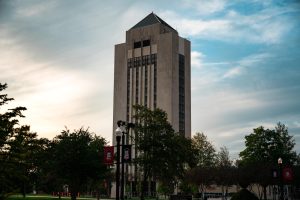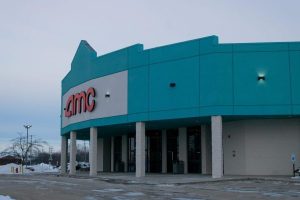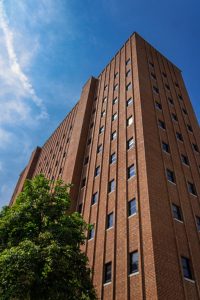Provost admitted for heart surgery
April 11, 1991
NIU Provost Kendall Baker entered the hospital with pains in his right arm Monday, and was diagnosed Tuesday with three blocked arteries coming from his heart.
Baker was scheduled for triple bypass surgery on Wednesday at 1 p.m.
Provost Baker’s secretary Joyce Gardner said she had no advance warning.
“The provost was shocked. He doesn’t smoke, drink, or eat junk food. He exercises often—sometimes it seems like you should do the opposite,” Gardner said.
Baker went into the hospital Monday complaining of pains in his arm, apparently thinking it could be from an old skiing injury, she said.
Tuesday, doctors found he had blockage in three coronary arteries. Gardner said the hospital reported the obstruction was caught before heart damage could occur.
Baker came to NIU in 1987, and recently was nominated for presidential positions at Kent State University and Memphis State University.
Associate provost Lou Jean Moyer said Baker’s duties are being handled through a coordinated effort of the provost staff and no replacement will be sought.
“It’s serious surgery but we have every expectation that the provost will be back. We’re dividing up his duties while he’s out,” Moyer said.
Donald Brod, chair of the journalism department, recently underwent triple bypass surgery himself. He said the surgery is complicated but he has never felt better.
“All three hospitals in Rockford are quite proficient in bypass surgery. If successful, it does wonders for people with blocked arteries,” Brod said.
Swedish American Hospital in Rockford was unable to comment on the situation, but Wednesday afternoon a representative said Baker went into surgery around noon and would be there four or five hours. The hospital said Baker would then be placed in the coronary care unit.
Marian Frerichs, chair of the school of nursing, said the surgery was open heart surgery.
“The provost would be placed on respiratory and pulmonary machines so that the heart can be stopped and worked on,” Frerichs said.
The procedure typically involves a vein being taken from one of the legs of the patient so that a “tissue conduit” can be sewn around the obstructed area of the artery, she said.
The surgically removed vein is usually around an inch long, depending on the size of the obstructed area, and is sewn above and below the corroded area, she said.
“The provost will be in the hospital about a week, but it will probably be about six months before he’s feeling no effect. The procedure has a super success rate,” she said.






